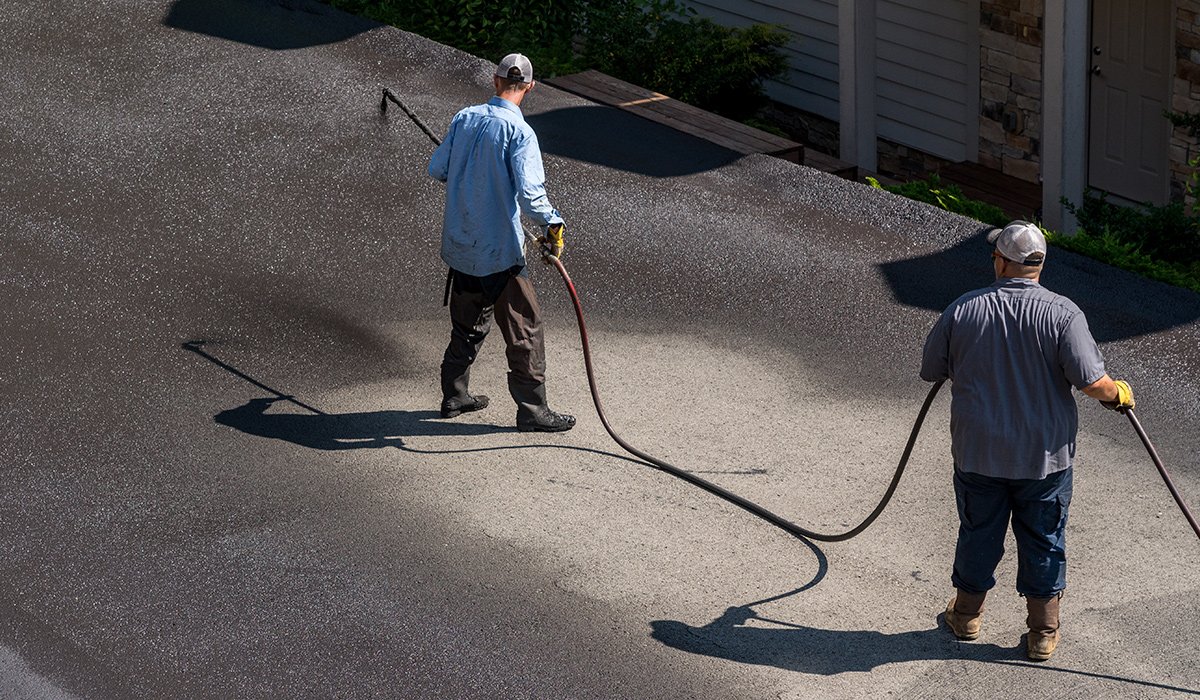Driveway sealing is a project that you can easily manage on your own over a weekend. Protects your pavers from the elements and makes them look new again. For the longest life and best appearance of your paver driveway, it is recommended to seal it every two years. But there are many things that could go wrong, and some mistakes are costly to fix. By making the right product and application decisions, you can enjoy your driveway for years to come.
Tips for Driveway sealing
Wait at least 4 weeks after installing the pavers to allow the natural appearance of efflorescence, a chalky substance that rises to the surface of the pavers after exposure to the sun. The efflorescence will go away on its own over time. If your pavers were installed more than a year ago, you may not see any. Sweep and vigorously wash your driveway one day before you start Driveway sealing and allow it to dry overnight. If you don’t have an electric washing machine, you can usually rent one from hardware stores. You can use a small amount of mild detergent to remove stains, but be sure to rinse off all of the suds. Choose a solvent-based sealer. Water-based sealants do not resist the wear and tear of a driveway. Choose a sealer based on the material of your pavers, be it brick, clay, or cement. Different sealants work better for specific materials than others. Opt for a sponge roller to apply the sealer. A nap-based roller is more likely to grab and catch your bonding sand. Find out if the sealant you need can be sprayed with a machine called the Chapin 1949, which you can rent. A spray application is the easiest way to avoid dragging sand from the paver joints. Wait at least 3 hours after applying your final coat of sealer before walking down the driveway and wait 24 hours before driving.
Driveway sealing
Do not apply sealer over the efflorescence. This will only seal the efflorescence to the surface of the paver. If your pavers have already been sealed and you see efflorescence, the sealer will need to be removed. Remember, efflorescence can appear after sealing as it rises from within the pavers.
Never apply sealer on pavers that are still damp or even damp. When using a solvent-based sealer, this can cause a milky appearance.
Solvent based sealer should not be applied over water based sealer. Doing so can cause discoloration. If you don’t know what sealer was used in the past, test an inconspicuous area before sealing the entire driveway?
Investing in a quality sealer will improve the look and durability of your driveway, while an inexpensive sealer will need to be reapplied more often and can cause discoloration if you change sealants later. Its okay to shop around, but the least expensive product may not give the best results.
If a sponge-type roller is not available, choose a nap that is less than 1/4 inch thick. Otherwise, the nap may reach the junction sand between the pavers and pull up


